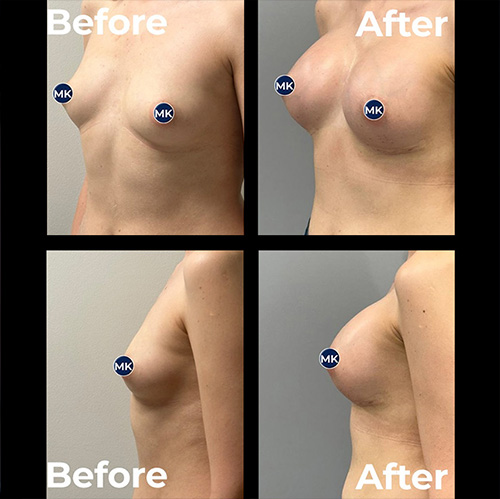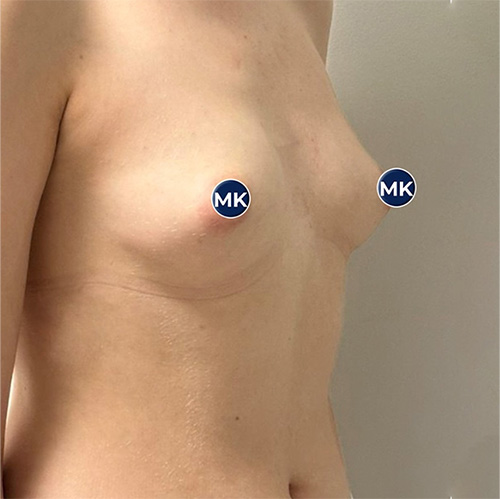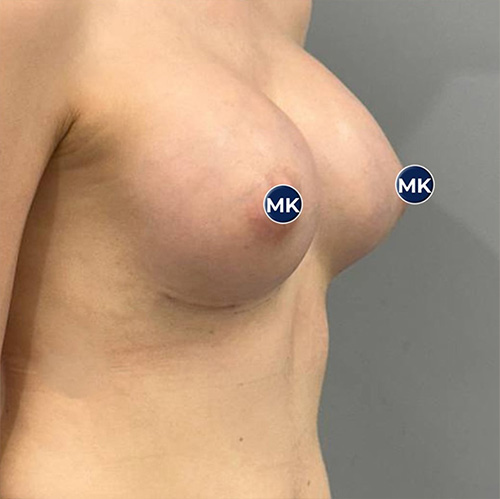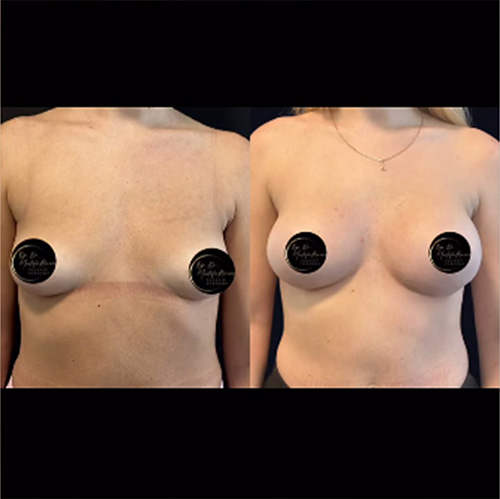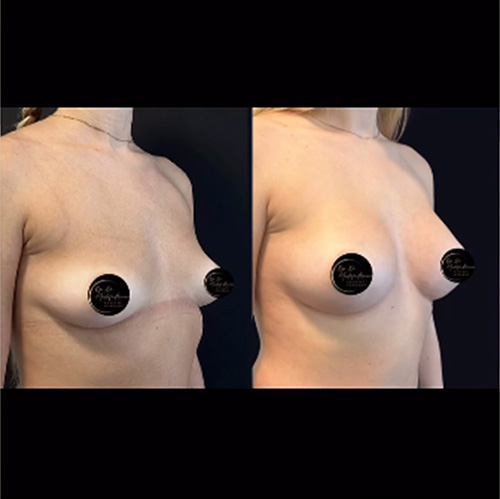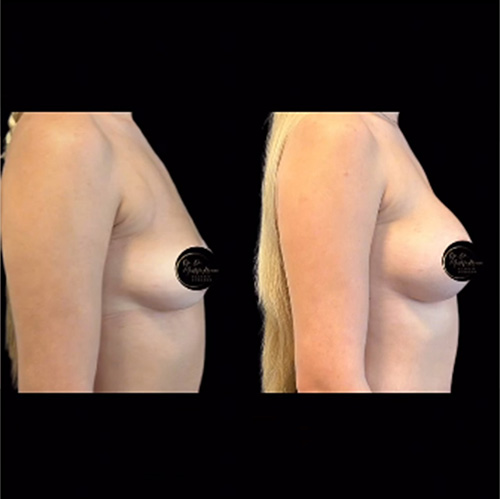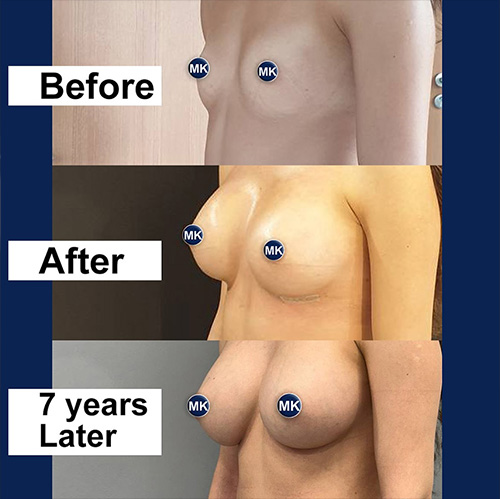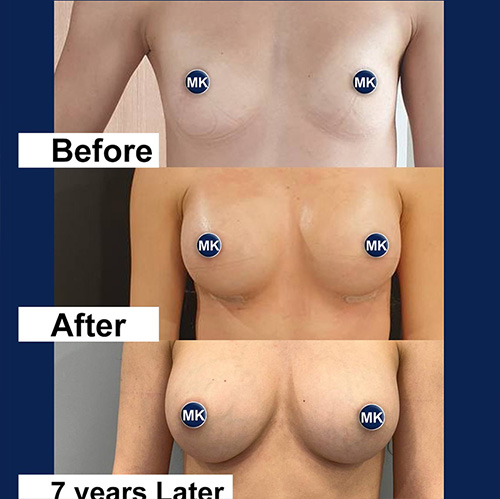Увеличение
груди

Увеличение груди (Аугментационная маммопластика)
Увеличение груди — одна из операций в пластической хирургии, которая делает женщин наиболее счастливыми. Более женственный силуэт, сбалансированные пропорции тела и повышение уверенности в себе — вот главные преимущества этой операции.
Как проводится увеличение груди?
Мы проводим увеличение груди с использованием силиконовых имплантов. Силиконовые импланты безопасно используются в пластической хирургии уже более 60 лет и за это время стали предметом множества исследований. Благодаря этому сегодня мы обладаем четкой и точной информацией об имплантах:
* Силиконовые грудные импланты не вызывают рак груди.
* Они не мешают грудному вскармливанию.
* Они не препятствуют проведению скрининга на рак, такого как маммография и МРТ.
* У них нет определенного "срока службы"; нет фиксированного интервала времени для их замены.
Где размещается имплант?
В зависимости от потребностей и анатомической структуры пациентки мы можем разместить силиконовые импланты в двух разных плоскостях:
* Под мышцей (субпекторально)
* Под мышечной фасцией (субфасциально / над мышцей)
Выбор плоскости зависит от толщины кожи, объема тканей молочной железы, спортивных привычек и эстетических ожиданий пациентки.
Детали операции
* Продолжительность: Примерно 1 час 15 минут
* Анестезия: Проводится под общим наркозом
* Процесс восстановления:
* Послеоперационный период при размещении над мышцей проходит очень комфортно. После первой недели пациентке не рекомендуются особые ограничения в движениях.
* При размещении под мышцей в первые 4 дня может потребоваться прием обезболивающих. В первую неделю не следует поднимать руки выше 90 градусов, а в первый месяц — прилагать силу руками.
Нужна ли подтяжка груди?
Один из моментов, который необходимо оценить при планировании увеличения груди, — это наличие опущения груди. Если грудь обвисла, одной операции по увеличению будет недостаточно; в этом случае на том же сеансе следует провести подтяжку груди (мастопексию). Это может существенно повлиять на применяемую технику.
Кроме того, необычные анатомические условия, такие как асимметрия, воронкообразная грудь или килевидная грудь, могут повлиять как на планирование, так и на результаты. При наличии таких условий их следует подробно обсудить с пациенткой и правильно управлять ожиданиями.
Какие импланты я использую? Каплевидные или круглые?
Я тщательно выбираю силиконовые грудные импланты, которые использую при увеличении груди, отдавая предпочтение самым надежным и научно изученным мировым брендам. Выбор импланта — это не только эстетическое решение; он имеет большое значение для здоровья, безопасности и долгосрочной удовлетворенности.
Я всегда предпочитаю импланты с текстурированной поверхностью
Все импланты, которые я использую, имеют текстурированную поверхность. Причина этого в том, что импланты с гладкой поверхностью несут два значительных риска:
Риск капсулярной контрактуры (образования твердой капсулы) при использовании гладких имплантов составляет около 30%.
Риск смещения импланта (поворота или скольжения) выше.
Поэтому я уже много лет свожу эти риски к минимуму, используя только импланты с текстурированной поверхностью.
Единственным потенциальным риском, связанным с текстурированными имплантами, является редкое заболевание под названием АККЛ (Анапластическая крупноклеточная лимфома), вид лимфомы.
Согласно литературе, этот риск крайне низок, примерно 1 на 10 000 человек.
В повседневной жизни мы неосознанно идем на риски, которые намного выше. Поэтому как логически, так и с медицинской точки зрения целесообразно принять этот риск, чтобы избежать гораздо более частых проблем, таких как капсулярная контрактура и смещение импланта.
Варианты формы имплантов: Каплевидные и круглые
Импланты различаются не только свойствами поверхности, но и формой и профилем.
Каплевидные (Анатомические) импланты:
* Обычно они предпочтительны для пациенток, у которых совсем нет ткани молочной железы.
* Поскольку у таких пациенток вся форма груди создается имплантом, каплевидная форма дает преимущество для достижения естественного вида.
* Однако вопреки распространенному мнению, идея о том, что "каплевидный имплант оставляет верхнюю часть груди пустой", неверна.
* Независимо от формы импланта, все современные импланты заполняют верхнюю часть груди.
У каплевидных имплантов есть риск поворота в 3%. В этом случае форма груди может исказиться. Поэтому у пациенток с риском поворота безопаснее предпочесть круглые импланты каплевидным.
Круглые импланты:
* Это наш первый выбор для пациенток, у которых есть собственная ткань молочной железы и которые хотят только увеличения объема.
* С круглыми имплантами достигается полнота, и не происходит искажения формы, если имплант повернется.
* Они также эстетически эффективно заполняют верхний полюс груди.
Выбор профиля: Низкий, средний, высокий?
Силиконовые импланты различаются не только формой, но и профилем (высотой). Выбор профиля определяется анатомией грудной клетки пациентки:
* Для пациенток с плоской грудной клеткой: Средний или высокий профиль.
* Для пациенток с выступающей грудной клеткой (килевидная грудь): Высокий профиль.
* Для пациенток с впалой грудной клеткой (воронкообразная грудь): Предпочтителен низкий или средний профиль.
Под мышцей или над мышцей при увеличении груди?
Какая методика подходит вам больше?
Один из самых частых вопросов при увеличении груди — где будет размещен силиконовый имплант: под мышцей или над мышцей?
Прежде всего хочу сказать, что обе методики успешны и безопасны. Ни одна из них не имеет абсолютного превосходства над другой. Выбор методики полностью определяется потребностями и анатомической структурой пациентки.
Я часто и уверенно использую обе методики.
Когда предпочтительно размещение над мышцей (субгландулярно)?
Размещение импланта над мышцей означает, что имплант устанавливается под тканью молочной железы, но на мышце. Это размещение рассматривается как первый вариант в следующих случаях:
* Если толщина подкожной клетчатки и ткани молочной железы пациентки достаточна: Если ткани достаточно, чтобы предотвратить видимость импланта снаружи, нет необходимости заходить под мышцу. Размещение над мышцей более комфортно.
* Если диаметр существующей груди как минимум на 2 см больше диаметра устанавливаемого импланта: В этом случае имплант лучше охватывается тканью молочной железы, что обеспечивает более естественный вид.
* Если увеличение груди планируется в сочетании с подтяжкой груди (мастопексией): При таких комбинированных операциях технически необходимо размещать имплант над мышцей.
Когда предпочтительно размещение под мышцей (Dual Plane)?
При размещении под мышцей имплант устанавливается под грудной мышцей, а иногда между мышечной фасцией и мышцей. Эта методика предпочтительна в следующих случаях:
* Если ткань молочной железы пациентки очень тонкая: Если толщины недостаточно, чтобы покрыть верхнюю часть импланта и предотвратить его видимость снаружи, требуется поддержка мышцы.
* Если диаметр импланта равен или больше диаметра существующей груди: В этом случае размещение под мышцей обеспечивает лучшую маскировку, так как края импланта выступали бы сильнее.
* У пациенток с легким провисанием нижней части груди, но нормальным положением сосков: В этой анатомической ситуации, когда нижний полюс груди длинный, размещение под мышцей обеспечивает более естественный и сбалансированный вид.
Какая методика правильная?
На вопрос "под мышцей или над мышцей?" при увеличении груди нет одного правильного ответа. Мы вместе определяем наиболее подходящий план для каждой пациентки, основываясь на ее строении тела, ожиданиях и потребностях.
Цель: Достичь результата, который будет естественным, здоровым, долговечным и эстетически удовлетворительным.
Давайте вместе составим наиболее подходящий для вас план.

